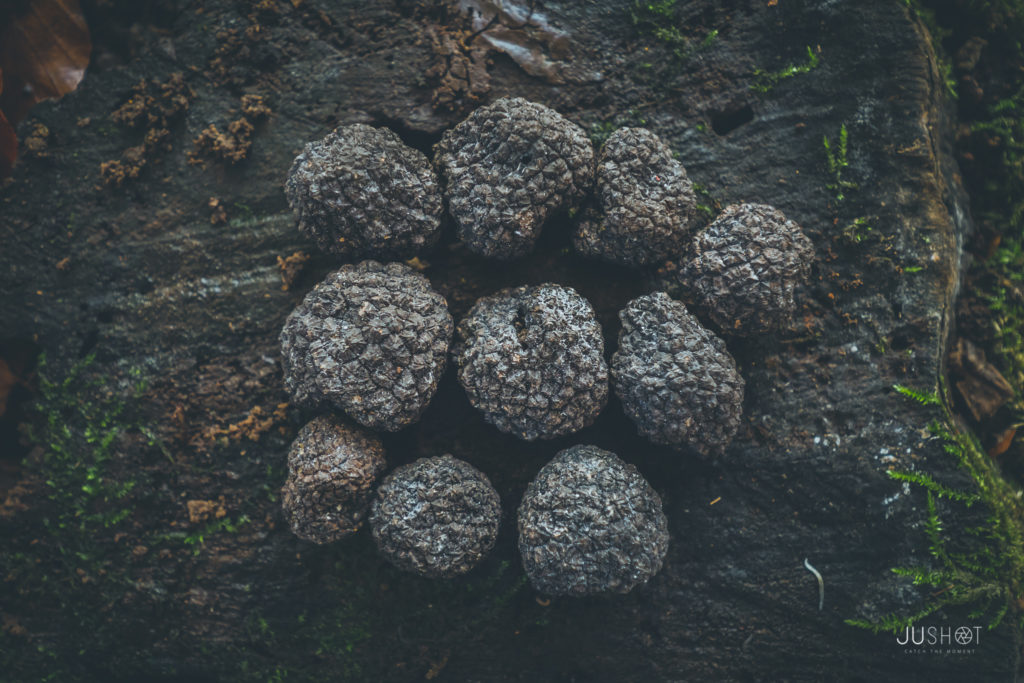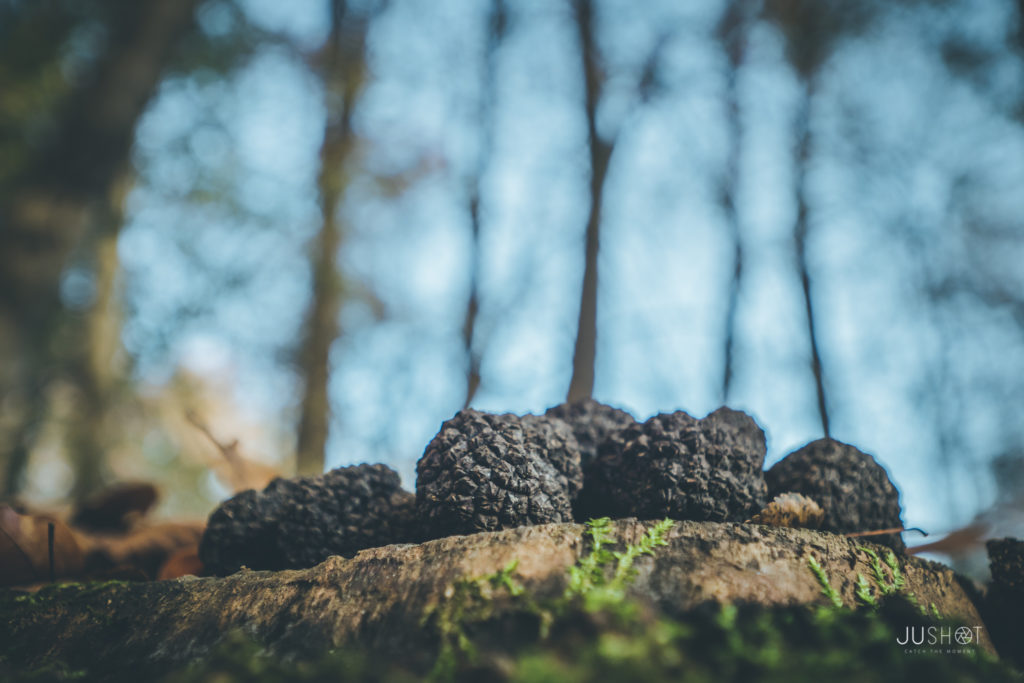

Truffles in Poland – The Treasure recovered
Truffles (Tuber spp.) Are apothecial mushrooms (Ascomycota) characterized by an underground (hypogenic) life cycle (fruiting bodies usually grow in the soil at a depth of approx. 10–20 cm).
They form mycorrhiza with many species of forest trees and shrubs, incl. oak, beech, linden, hornbeam, black pine, aspen and hazel (Granetti et al., 2005).
Truffles, known as the “secret fruit of the earth”, are mushrooms shrouded in legend. Writers, philosophers and researchers have been writing about them for centuries, and many stories surround them – mainly on where they grow and on how difficult they are to harvest. They are first mentioned in 1600 BC, by an unknown author. The Greek philosopher Theophrastus (372–286 BC), one of Aristotle’s students, wrote about them in his work. In Poland, the earliest mention of presence of truffles can be found in the first Polish cookbook (“Compedium Ferculorum, or collecting dishes”; Czerniecki, 1682). Further reports of truffles are found both in scientific studies and in literature. Despite a vast literature available on the subject at that time, even in the 1940s, the presence of truffles in Poland was questioned (Orłoś, 1947).
The conditions favorable for the development of the aforementioned fungi are found in both sandy and wet soils, but rich in calcium carbonate, low in nitrogen, phosphorus and iron, and rich in potassium and sulfur, with a pH of 7-8. The quality of fruiting bodies, their taste and smell are also influenced by the species of the partner plant (tree). Truffles from beech stands are hard, have a distinct smell and can be stored longer than fruiting ones, for example under hazel or oak.

The best-known types of truffles, well-loved for their smell and taste, are the white truffle (Tuber magnatum Pico), the black spore truffle (Tuber melanosporum Vitt.), the summer truffle (Tuber aestivum Vitt.) and the autumn fruiting summer truffle (Tuber aestivum var. uncinatum Chatin).
There are two types of truffles successfully grown in a plantation environment: the black spore truffle (T. melanosporum) and the summer truffle (T. aestivum). Attempts to cultivate and grow white truffle (T. magnatum) are currently underway. This particular species is harvested only in places where grows naturally. Whereas about 80% of the harvesting of black and summer truffle takes place in plantations.
In Poland, evidence of summer fruiting bodies, hollow truffles (T. excavatum), red truffles (T. rufum) and bright red truffles (T. fulgens) was found in several parts of the Country, mainly in the South. It cannot be ruled out that the fruiting bodies of summer truffles are present in Poland no less than, for example, the fruiting bodies of porcini mushrooms (Boletus spp.), However, due to the underground development of the fungi (the fruiting bodies are usually found in the soil at a depth of about 10 cm), as well as the lack of tradition of harvesting for culinary purposes, truffles tend to be an “overlooked” species (Hilszczańska et al., 2016).




